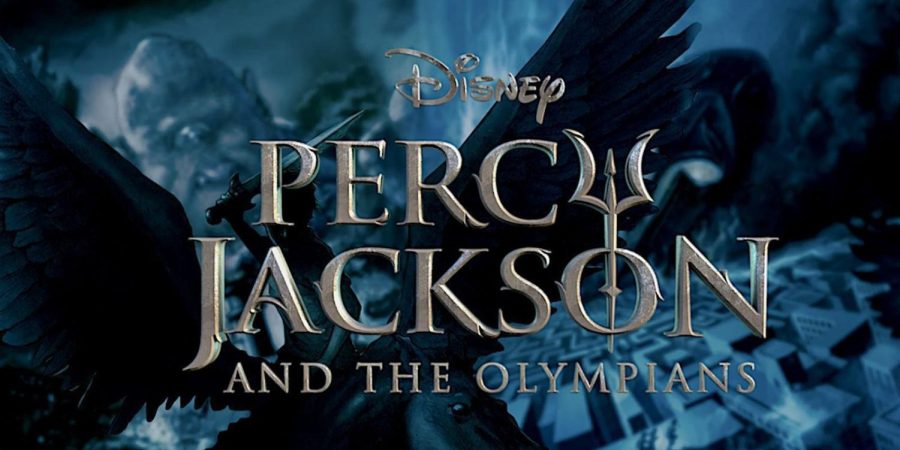We Need to Reimagine Ancient Greece
The long-awaited cast announcement for the upcoming television series “Percy Jackson and the Olympians” was released last May by Rick Riordan, the author of the book series. Having already named Walker Scobell as Percy Jackson about a month earlier, Riordan announced on his blog that Aryan Simhadri had been cast as Grover Underwood and Leah Sava Jeffries as Annabeth Chase. This casting and the controversy it elicited, mostly surrounding the choice of naming Jeffries, a Black actor, as Annabeth, brought up old arguments about the ethics of color-blind casting.
Frankly, I’m not going to bother with the specifics of that debate, as most of us already have our opinions firmly set. Instead, I want to explore one of the deeper reasons behind the naive insistence of some people to keep Annabeth white. That is, the cultural tendency the Western world has of imagining the myths of Ancient Greece, on which Riordan’s stories are based.
When it comes to Ancient Greece, Western audiences subscribe to a myth. It’s a pervasive one, crafted by nefarious minds trying to create a lie of Western supremacy. This myth is perpetuated by a willful ignorance on the part of academics who study antiquity, film directors who cast movies based on classical stories and writers who reimagine the world of Ancient Greece. This perpetuation of Western myths creates a divide between the real stories of Ancient Greeks and how we, as Western readers and viewers, imagine them and who we imagine them as.
All we have to do to see this paradox in action is turn on a film inspired by the classical period. Films such as “Troy” and “Clash of the Titans,” which came out in 2004 and 2010 respectively, populated their sets with actors of Western European descent. For example, both Brad Pitt, who played Achilles in the former, and Sam Worthington, who played Perseus in the latter, are of English descent.
While one could argue for the separation of mythical heroes from the ethnic contexts in which they were created, continually casting actors of northwestern European descent creates a specific image in Western audiences’ minds of fair-skinned, light-eyed and fair-haired heroes. This pattern excludes the greater diversity of the people that lived during this time, the same people who created and shared the stories these movies portray. It is no one creator’s fault for perpetuating this myth, as this was the prevailing belief at the time. In fact, it’s only recently that this view has started to shift.
One of the main blows to the perceived “whiteness” of Ancient Greece has to do with their statues, which for the past couple hundred years have been prized for their serene, chic whiteness. There are white supremacists groups that use the white, marble statues as evidence that supports their belief in an “unblemished lineage of white Western culture” that begins in Ancient Greece.
Imagine their horror when they learned that the statues were not, in fact, white. Mark Rabbe, working on an archaeological dig in the ancient city of Aphrodisias, found statues bedecked in small flecks of color, revealing the hues of skin, hair and decoration. A handful of other scholars discovered similar statues, shocked to see that such a vital part of Ancient Grecian art had been wholly ignored. Even though their studies were contemporaneous to Riordan’s writing of the Percy Jackson series, they remained on the fringe of classical study. It was not until recently that polychromy on Greek statues came into the mainstream, even getting its own exhibit at the Metropolitan Museum of Art. Artists and researchers worked alongside one another to create statues that matched the original designs to the best of their ability. If you attend this exhibit you will see that, while some statues have lighter features, others have dark, coiled curls. Then the characters in Homer’s “Iliad” were, perhaps, not full of people who looked like Pitt and Worthington.
Some are hesitant to accept this truth. Controversy very similar to the casting of Jeffries as Annabeth sprung up when the BBC cast David Gyasi, a Black man, as Achilles in their 2018 show, “Troy: Fall of a City.” While this casting is no more anachronistic than casting Pitt, it caused outrage and subsequent discourse online.
Writing on the controversy, Tim Whitmarsh, the AG Leventis Professor of Greek culture at the University of Cambridge, argued that the casting provided space for audiences to rethink how they imagine the famous characters from Homer’s “Iliad” and “Odyssey.” He explains that, while Achilles is described as having medium-to-light colored hair, Homer does describe Odysseus, another hero within the saga, as Black. But not in the way we think of it. In the same article, Whitmarsh explores Homer’s physical descriptions of Odysseus and how they conflict with America’s perception of race. In two instances in the Odyssey, Athena improves Odysseus’ appearance by making him “black-skinned” and his hair appear dark and “wooly.” Whitmarsh argues that this is not necessarily ascribing to Odysseus’ characteristics that would fit him into a modern, racial category, but instead uses color to “associate him with the rugged, outdoors life he lived” and further emphasize his heroic qualities and masculinity. On the flipside, Whitmarsh explains, being described as “white-skinned” was an insult for Ancient Greek men, as it insinuated that they spent no time outdoors competing in athletic, laborious tasks such as war.
All this is to say that the perception of who the Ancient Greeks were has changed drastically in the last 20 years, and Riordan’s choice to alter the characters within his world better honors the culture that inspired him.
In all honesty, I loved that Annabeth had light-colored eyes and blonde hair in the books, as I was overjoyed to find myself represented in one of Riordan’s smartest and toughest characters. However, film and television roles belonging to characters like Annabeth’s have gone almost exclusively to girls who look like me, whether it is in the name of historical realism or not. It is the research, inspired by my love for Riordan’s series, that led me to discover all I explained above and made me realize the importance of Jeffries’ casting. Annabeth in the books is white, she has blonde hair and light, gray eyes, yet Andromeda, a character in the original myth of Perseus, was likely Ethiopian and is exclusively played by white actresses.
People who look like Jeffries belong in stories about Ancient Greece, but they have been almost entirely excluded. It’s time that we expand the range of who is included in art based off of the Ancient Greeks, and we need to celebrate the new cast and Riordan’s decision to make his world more inclusive.
Kari White, FCRH ’24, is an English major Wilmington, Del.

Kari White is a senior from the blink-and-you’ll-miss-it state of Delaware. She is majoring in English with a concentration in creative writing, as well...










































































































































































































